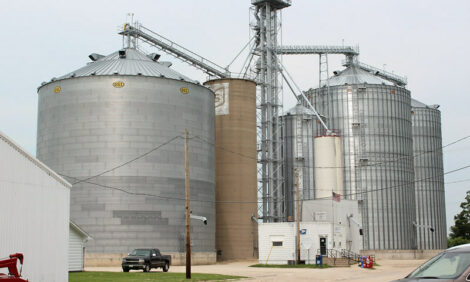



R-CALF Kick Up a Fuss on Feed Ban
US - The US cattlemen's group, R-CALF, have said that the FDA’s feed ban is based on political grounds and circumvents scientific recommendations. They re-assert their belief that imported cattle is given more favourable treatment than US cattle.This week the U.S. Food and Drug Administration (FDA) on Wednesday issued a final rule that banned certain cattle materials from animal feed.
FDA states that the Feed Ban Rule will further protect “animals and consumers against bovine spongiform encephalopathy (BSE)…and strengthens existing safeguards,” most notably by removing only the brains and spinal cords from cattle over 30 months (OTM) of age, which are among the tissues considered specified risk materials (SRMs).
“R-CALF USA asserts this rule is less stringent than what Canada implemented in July 2007, and that there are multiple holes in FDA’s rule that still allow potential and significant transmission routes of the BSE infective agent,” said R-CALF USA President/Region VI Director Max Thornsberry, a Missouri veterinarian who also chairs the group’s animal health committee.
For example, say R-CALF, in Canada, SRMs that are banned for use in animal feed, pet food and fertilizer are the same as those removed from cattle slaughtered for human consumption.
They say that from OTM cattle the following SRMs are removed: the skull, brain, trigeminal ganglia (nerves attached to the brain) eyes, tonsils, spinals cord and as a matter of practice the vertebral column, and the dorsal root ganglia (nerves attached to the spinal cord. The distal ileum portion of the small intestine is removed from cattle of all ages.
For domestic OTM cattle, the U.S. Department of Agriculture (USDA) defines SRMs to be removed as the brain, skull, eyes, trigeminal ganglia, spinal cord, vertebral column (excluding the vertebrae of the tail, the transverse process of the thoracic and lumbar vertebrae, and the wings of the sacrum), as well as the dorsal root ganglia. The tonsils and distal ileum are removed from all cattle.
Unfortunately, regarding OTM cattle (even those imported from countries like Canada, with significant BSE problems), FDA’s rule only requires two of the nine tissues identified as high-risk tissues – the brain and spinal cord – be removed from animal feed. Also, for cattle under 30 months of age, no SRMs are removed.
In addition, FDA does not prohibit the feeding of poultry litter to cattle – a practice that provides a known and direct route of transmission for BSE to cattle.
“FDA’s Feed Ban Rule is politically based, not science-based, because it does not even meet the minimal recommendations of the OIE (World Organization for Animal Health) to remove all SRMs from animal feed and fertilizer,” Thornsberry pointed out. “Yet, FDA’s rule will significantly increase the costs to cattle producers for the disposal of deadstock, which is an unfavorable, though inevitable, consequence of raising live animals.”
TheCattleSite News Desk


